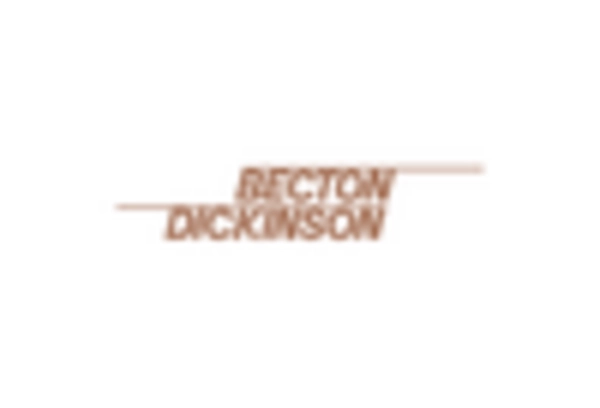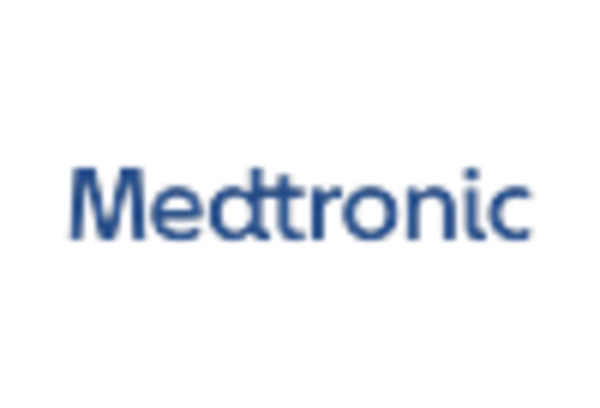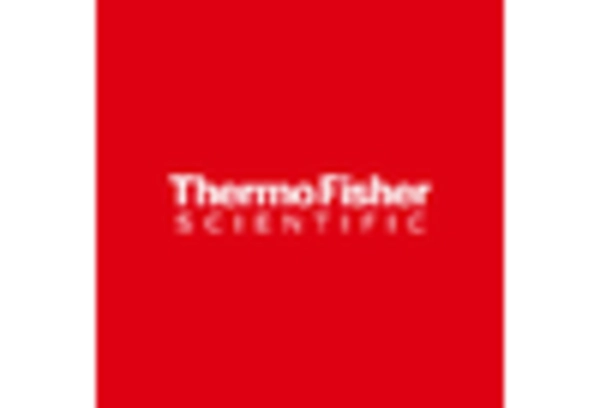Increasing Prevalence of Liver Diseases
The rising incidence of liver diseases, including hepatitis and cirrhosis, is a primary driver of the Liver Biopsy Market. According to recent data, liver diseases affect millions worldwide, leading to a heightened demand for diagnostic procedures. This trend is particularly evident in regions with high rates of viral hepatitis, where liver biopsies are essential for assessing disease progression. The need for accurate diagnosis and monitoring of liver conditions propels the market forward, as healthcare providers seek reliable methods to evaluate liver health. Furthermore, the increasing burden of non-alcoholic fatty liver disease (NAFLD) is contributing to the demand for liver biopsies, as clinicians require precise information to guide treatment decisions. As awareness of liver health continues to grow, the Liver Biopsy Market is likely to expand to meet the needs of patients and healthcare systems.
Rising Demand for Personalized Medicine
The shift towards personalized medicine is emerging as a significant driver in the Liver Biopsy Market. As healthcare moves away from a one-size-fits-all approach, the need for tailored treatment plans based on individual patient profiles becomes increasingly important. Liver biopsies play a crucial role in this paradigm shift, providing essential information about liver pathology that informs personalized treatment strategies. The ability to assess liver tissue at a molecular level allows clinicians to make more informed decisions regarding therapy options, particularly in the context of liver cancer and chronic liver diseases. This trend is likely to enhance the demand for liver biopsies, as healthcare providers seek to optimize patient outcomes through individualized care. Consequently, the Liver Biopsy Market is poised for growth as the focus on personalized medicine continues to gain traction.
Regulatory Support for Diagnostic Procedures
Regulatory support for diagnostic procedures is an essential factor driving the Liver Biopsy Market. Governments and health organizations are increasingly recognizing the importance of accurate diagnostic tools in managing liver diseases. This recognition has led to the establishment of guidelines and frameworks that promote the use of liver biopsies as a standard practice in clinical settings. Additionally, regulatory bodies are working to streamline the approval processes for new biopsy technologies, encouraging innovation and adoption within the market. As a result, healthcare providers are more likely to incorporate liver biopsy procedures into their diagnostic protocols, thereby increasing demand. The ongoing support from regulatory agencies is expected to foster a favorable environment for the Liver Biopsy Market, ultimately enhancing patient outcomes through improved diagnostic accuracy.
Growing Investment in Healthcare Infrastructure
Investment in healthcare infrastructure is a vital driver of the Liver Biopsy Market. As countries prioritize the enhancement of healthcare systems, the availability of advanced diagnostic tools, including liver biopsy procedures, is expected to increase. This trend is particularly pronounced in emerging economies, where governments and private sectors are collaborating to improve healthcare access and quality. The establishment of specialized liver clinics and diagnostic centers is likely to facilitate the adoption of liver biopsy techniques, thereby expanding the market. Furthermore, increased funding for research and development in liver disease diagnostics is anticipated to lead to innovative solutions that enhance the efficacy of liver biopsies. As healthcare infrastructure continues to evolve, the Liver Biopsy Market is expected to benefit from improved access to diagnostic services and enhanced patient care.
Technological Advancements in Biopsy Techniques
Technological innovations in biopsy techniques are significantly influencing the Liver Biopsy Market. The development of minimally invasive procedures, such as ultrasound-guided liver biopsies, has improved patient outcomes and reduced complications. These advancements not only enhance the accuracy of liver disease diagnosis but also increase patient comfort, leading to higher acceptance rates of biopsy procedures. Moreover, the integration of imaging technologies, such as MRI and CT scans, with biopsy techniques allows for more precise targeting of liver lesions. This synergy between technology and clinical practice is expected to drive market growth, as healthcare providers adopt these advanced methods to improve diagnostic accuracy. As the industry continues to evolve, the introduction of new technologies may further transform the landscape of liver biopsies, making them safer and more effective.









Leave a Comment